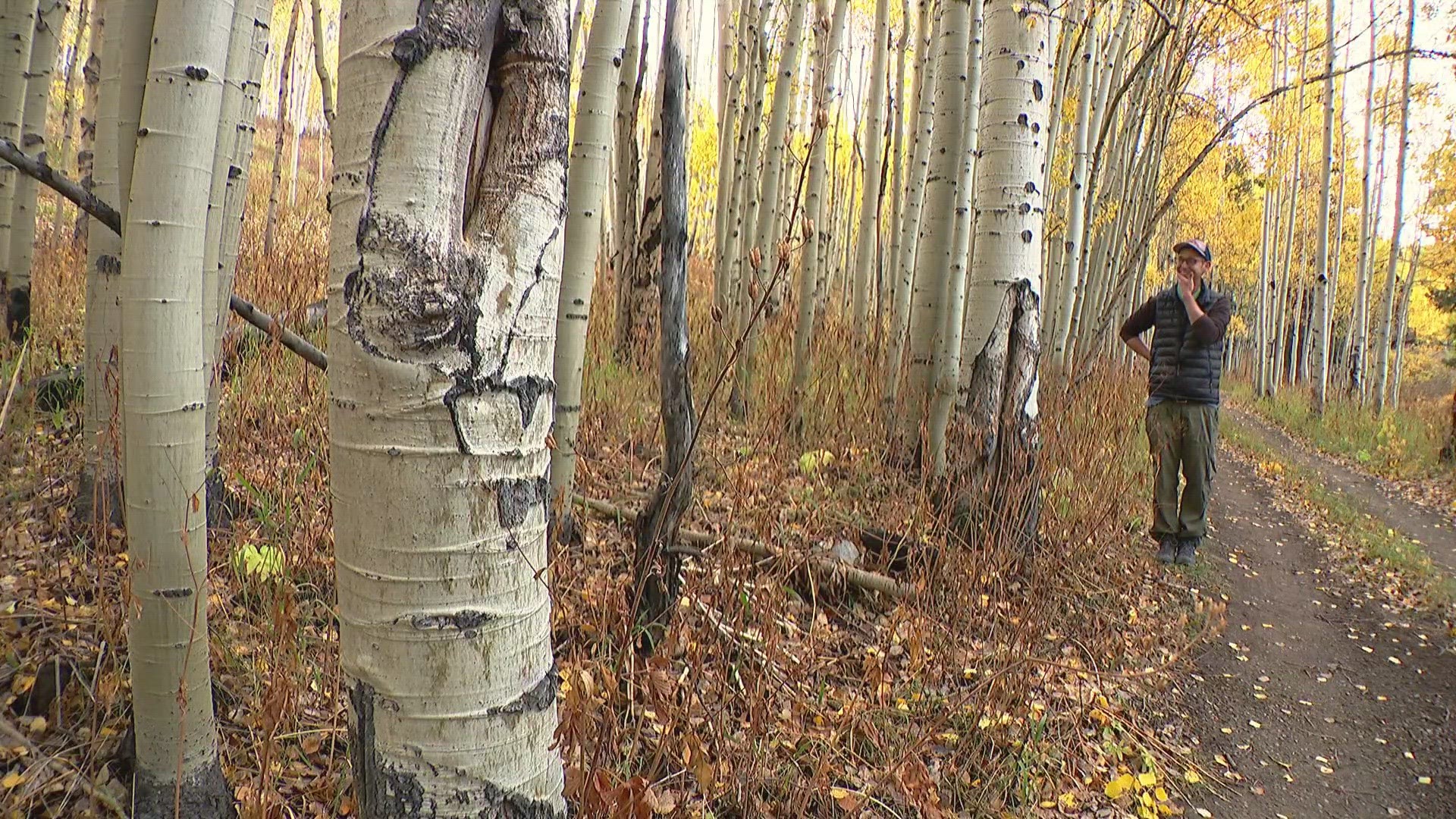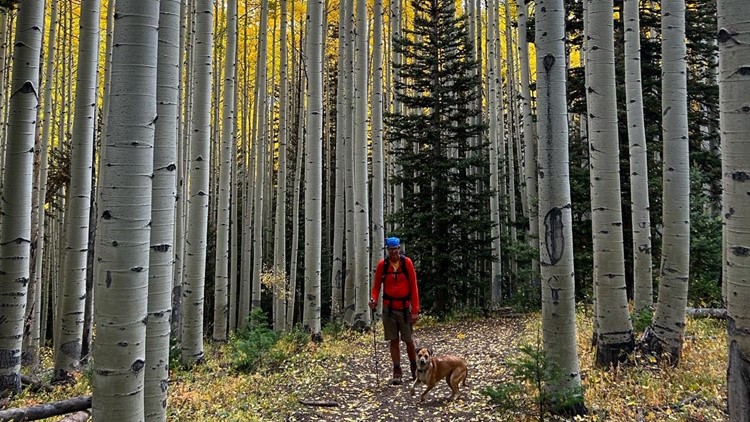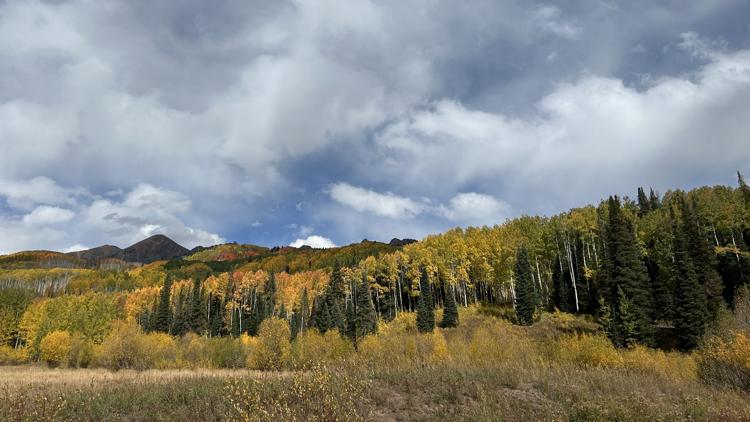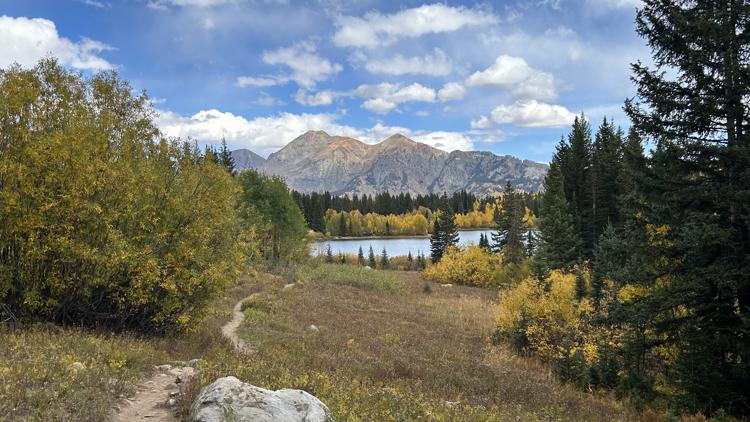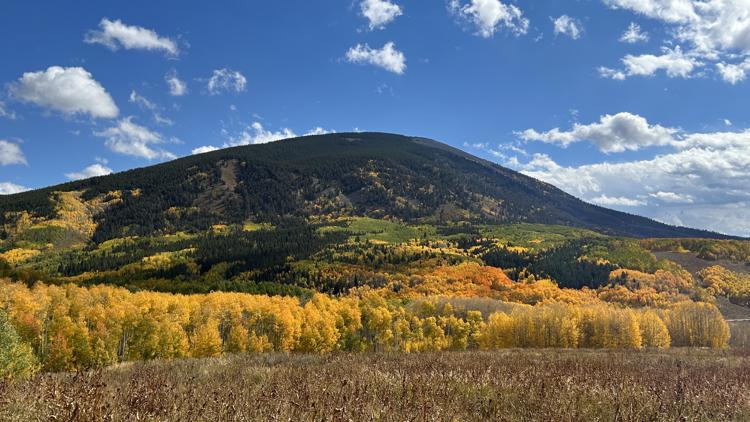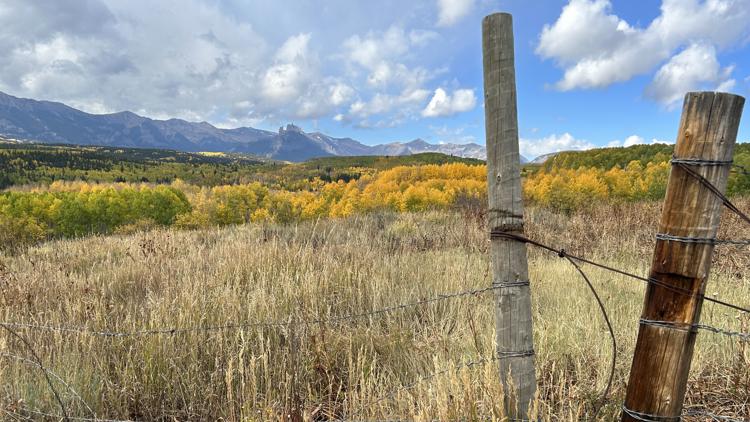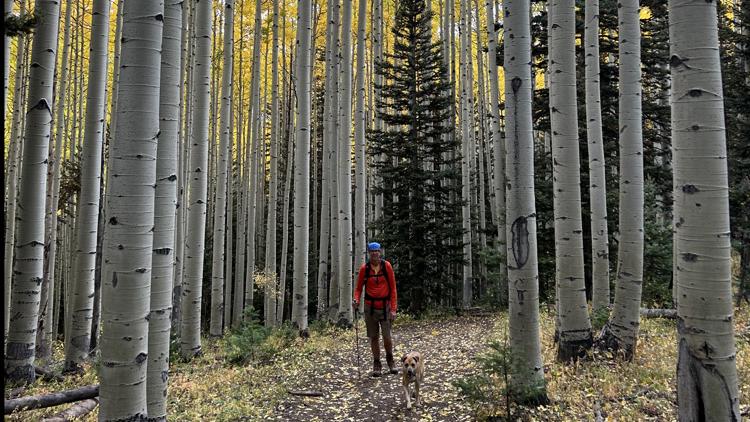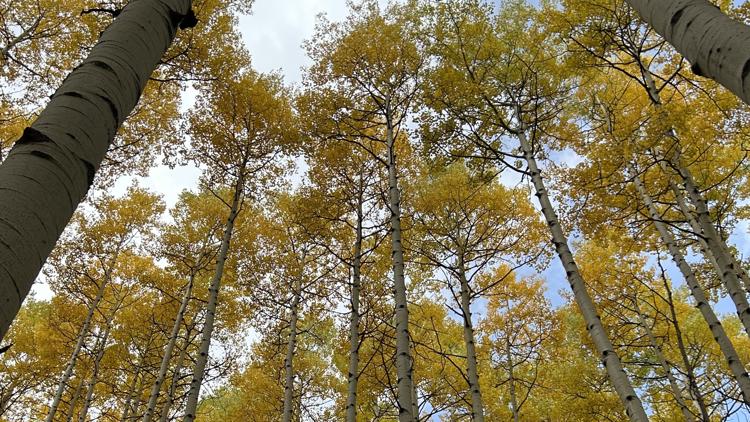CRESTED BUTTE, Colo. — Aspen trees are the celebrities of a Colorado fall day. Think about it. People line the roads to take pictures with them. Instagram feeds from all over the state feature senior-picture worthy photos galore from late September through mid-October.
But aspens are much more than a pretty face.
Ian Breckheimer is a research scientist at Rocky Mountain Biological Laboratory in Gothic, Colo. He knows a lot about plants — aspens included. Most of the research he does is on climate change.
"There's a lot we don’t know about how climate is going to affect the ecosystem and how climate is going to affect the things we care about," Breckheimer said.

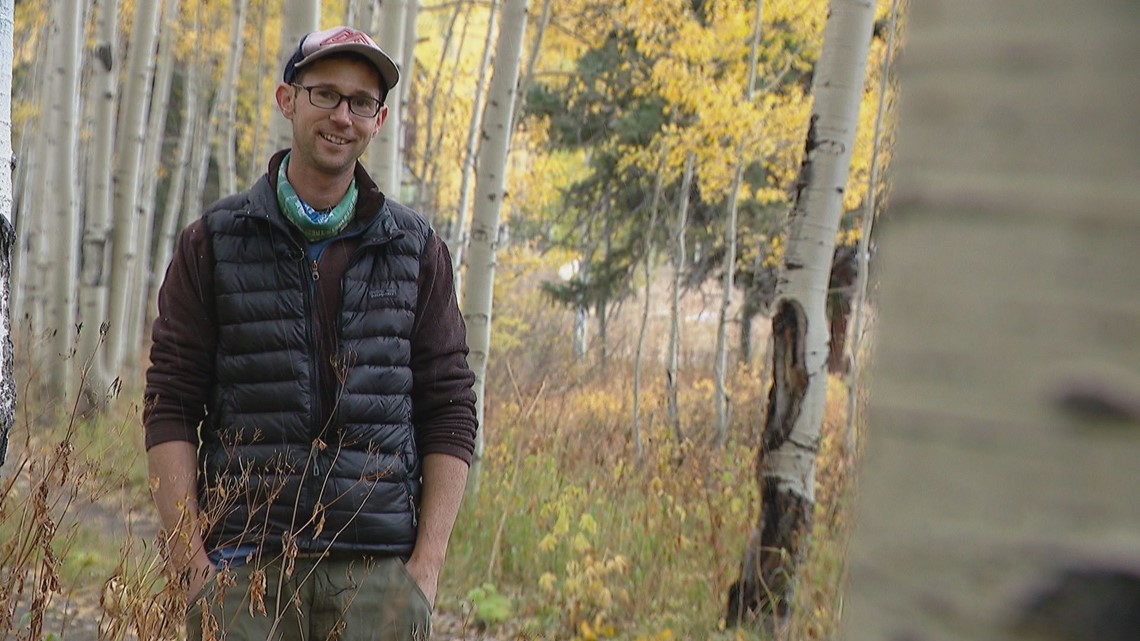
And in Colorado, people care about the outdoors. And this time of year, they care about aspens. So Breckheimer had a few interesting facts about the trees that you can impress your friends with at the next get-together.
ASPENS ARE FROM ANOTHER PLANET
"They’re like from Mars," Breckheimer said.
Not really, but it is fun to think about. Aspens are clonal. Breckheimer describes them as sort of like an iceberg.
"You see the forest around you and you think that that’s the tree," Breckheimer said.
Wrong.
"The tree is the dense network of roots underground that link this tree to that tree to that tree into a single organism," Breckheimer said.
MIDWESTERNERS OF THE PLANT WORLD
Breckheimer said a lot of times trees compete for light. Not aspens. They are like midwesterners. Always polite and never wanting to take the last cookie on the plate. I can say this because I am from Wisconsin.
"If you look at an aspen canopy, it’s usually pretty open and sparse -- they're actually not good at capturing light," Breckheimer said. "They’re not directly competing with their neighbors because they're really likely to be part of the same organism.
"It's easy to think of them as like the most socialist trees — they’re all for one and one for all."
Do not write hate mail to me about his last quote. It is funny and it illustrates a point.
ASPEN FORESTS MAKE GREAT HOMES
Aspen groves make a great place for other plants and animals to thrive. Lots of birds and mammals live in aspens, and plants really love hanging out beneath them. And not because aspens are aesthetically pleasing.
"Since they’re not good at shading plants out, they have a ton of plants in the understory that benefit from the aspen," Breckheimer said. "They are important to the ecosystem and because they're the only deciduous tree up here — if something happens to the aspen, it’s not like another tree that can do the same job.
"If we lose a large portion of our aspen, we’re also going to lose a large portion of our birds and a large portion of our herbaceous plants which also bring people to our mountains."

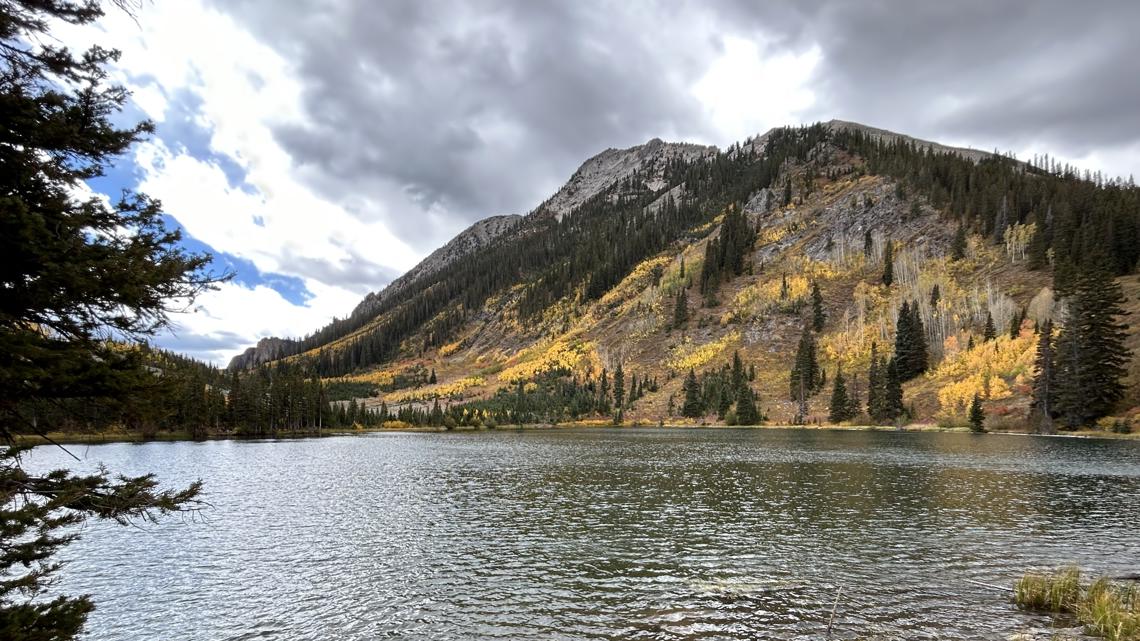
ONE OF A KIND
As Breckheimer mentioned in the above fun fact, aspens are the only deciduous tree that can live up high. They dig the mountains as much as the average Coloradan.
"It's the only tree that is deciduous, that drops its leaves in the winter, that is able to grow in environments that have this harsh of winter," Breckheimer said. "The reason why it’s able to do that is because it has tricks up its sleeve."
The crafty little aspen has that beautiful silvery bark that looks so nice in photos, but also serves a purpose.
"If I were to scratch it — I'm not going to because that’s impolite to the tree, but if I were to scratch it, I’d see a green layer underneath," Breckheimer said. "It has a ton of the machinery that plants need to make sugar — it can photosynthesize without leaves and that’s one way it deals with that short season up here."
Cool. Also, stop carving your names or initials into aspens. You heard Breckheimer — it is impolite.
GALLERY: Changing aspens
A GOOD REASON TO STUDY TREES
Trees take water up in their tissues and it evaporates off their leaves. Aspens are no different.
Why should you care? I bet Breckheimer knows why.
"The water that comes down in this ecosystem eventually goes into the Colorado River and it feeds cities and ag in the southwest," Breckheimer said. "If we want to understand how much water is going to be flowing down the Colorado River in the future, we really need to understand how forests use water in the west."
Good thing he is smart and is a scientist who is studying this out at the Rocky Mountain Biological Laboratory.
DRY SUMMERS MEAN EARLY COLOR-UPS...AND FALL-DOWNS
In some parts of the state, the colors came a bit early this year, and the leaves are falling earlier too — especially in southwest Colorado.
"One thing we see in drier conditions is aspen turn yellow earlier and they drop their leaves earlier—that’s something we think will probably continue to happen," Breckheimer said.
Shorter aspens are more drought resilient than their taller brethren. Breckheimer said in the future we might see more of the little guys.
A FINAL THOUGHT ON THE COLORADO SUPERSTAR
I have had family and friends from Wisconsin, or other parts of the country, who have more variety in their deciduous trees, say that a golden aspen glow is boring. Whatever. I think it is pretty awesome.
So does Breckheimer.
"It allows you to be surrounded by a forest full of gold coins," Breckheimer said. "It is the world made strange and wonderful for a couple of weeks."
SUGGESTED VIDEOS: Colorado Guide

